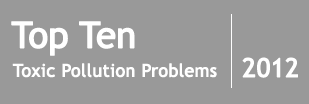Source #8
Product Manufacturing
Description
Product manufacturing is a general term for industries that produce consumer products. It spans a wide range of manufacturing processes and material types. Product manufacturing is a major contributor to individual country GDP and the global economy. The World Economic Forum reports that 70% of country GDP variations can be explained by differences in the amount of manufactured products exported.[1] It is clearly essential to a country’s prosperity and important to individual consumers. As lower and middle-income countries develop, the demand for consumer products grows, spurring rapid expansion of product manufacturing. Reduction of trade barriers, improved geopolitical relationships, and the improvement of infrastructure and technologies have all enabled this expansion and the global spread of product manufacturing.[2] Because of this globalization and efforts to incentivize manufacturing, many developing countries have been quick to reduce regulations and or release companies from complying with environmental standards in order to gain a competitive advantage. The result has been an extensive and widespread pollution problem caused by product manufacturing.

Product manufacturing pollution is an issue at over 100 sites in the Blacksmith Institute’s database and potentially exposes almost 3.5 million people to toxic pollutants. More than half of the sites are located in South Asia and Southeast Asia where regulations on product manufacturing are frequently lax. Other regions disproportionally represented include several African countries and China. China is second in the world in manufacturing and produces 15 percent of the worlds manufactured products.[3]
Product sectors from the Blacksmith Institute’s database of polluted manufacturing sites include textiles, electronics, food, fuel, plastics and metals. However, there are many more types of manufacturing that fall under this umbrella term, including raw materials, agricultural products, building products, pulp and paper mills and much more. According to the National Association of Manufacturers the top four largest manufacturing industries were food, chemicals, computers and electronics and metal products. Because of this variation, it is often difficult to characterize the type and nature of pollution problems in product manufacturing.
Exposure Pathways
Pathways for pollutants vary widely across types of product manufacturing; in general they include emissions from energy sources used to power production, emissions from incineration of waste products or heating during processes, and improper disposal of solid waste and wastewater. Some product industries use massive amounts of water, while other types of plants emit large amounts of emissions into the air. Once in the environment pollution from product manufacturing sites effects local populations. The majority of pollutant exposures in the Blacksmith Institute’s database derive from inhalation of contaminated dust, soil or gases and ingestion of contaminated water.
Lead pollution from product manufacturing sites in the database enters the environment mainly through wastewater that is improperly stored, not treated and indiscriminately dumped into local waterways. Other pathways include burning of solid waste. The chromium pollution at these sites is through both groundwater and air emissions.
Top Pollutant(s)
Again, because of the varied nature of product manufacturing, there are a wide variety of pollutant types that are released. As identified by Blacksmith, the key pollutants include lead, chromium, cadmium, arsenic, cyanide, dioxins, mercury, sulfur dioxide, volatile organic compounds and other particulates. The top pollutants by DALY are lead and chromium.
Combined health effects from these pollutants include neurological, gastrointestinal, cardiovascular and renal system problems and lung cancer. Refer to the health impacts section of these two pollutants for more information.
Global Burden of Disease
Blacksmith Institute estimates that product manufacturing contributes about 800,000 DALYs. The contribution to these DALYs is nearly evenly split between lead and chromium exposure. It should be noted that only chromium in the hexavalent form was used in the analysis. It should also be noted that like industrial estates, product-manufacturing sites release a diverse mix of pollutants. Lead and chromium are the top pollutants identified in the Blacksmith Institute’s database information. There could potentially be a much higher impact from the cumulative impact of combined pollutants, including possible pollutants not yet defined in our site investigations. As a result, this DALY calculation is very likely an underestimate.
What is being done?
Product manufacturing is driven by the demand for consumer goods. Consumers have the power to demand cleaner and safer products. As such, green-purchasing practices implemented at the large-scale corporate level and the individual level can have a huge impact on the practices of product manufacturers. Large corporations like Wal-Mart have been pressuring their supply chain to meet sustainable standards for operations, transforming the way some companies manufacture and deliver products.
Pressure from government, NGO’s and communities can cause the prohibition or phase-out of certain hazardous products. Many examples exist where products like the pesticide DDT, or leaded gasoline were phased out because of societal pressure. In 2005, the African Refining Company reported a voluntary phase-out of leaded-gasoline; however, it was essential to coordinate efforts among various stakeholders to implement a comprehensive phase-out program because one last refinery continued to produce leaded gasoline. The project primarily focused on the control of lead contents of gasoline all over Senegal. Using sampling results to show which areas were implementing the ban of leaded-gas, Blacksmith monitored the distribution of gasoline. Blacksmith also monitored ambient air quality to show the progress of the phase-out program.
Footnotes:
[1] “The Future of Manufacturing: Opportunities to drive economic growth.” World Economic Forum. 2012. Available at: www.weforum.org/reports/future-manufacturing38
[2] Ibid.
[3] “Facts About Manufacturing.” National Association of Manufacturers. Available at: http://www.nam.org/Statistics-And-Data/Facts-About-Manufacturing/Landing.aspx

-
Source #1
Battery Recycling
-
Source #2
Lead Smelting
-
Source #3
Mining and Ore Processing
-
Source #4
Tanneries
-
Source #5
Industrial/Municipal Dumpsites
-
Source #6
Industrial Estates
-
Source #7
Artisanal Gold Mining
-
Source #8
Product Manufacturing
-
Source #9
Chemical Manufacturing
-
Source #10
Dye Industry
-
The Remaining Five Sources



